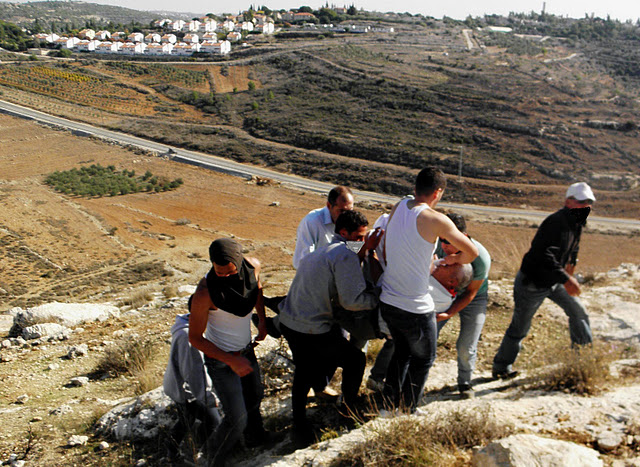Tag: An Nabi Saleh
-
Following night raids, Nabi Saleh continues to march for justice
by Aida Gerard 25 November 2011 | International Solidarity Movement, West Bank The Occupation Forces invaded An Nabi Saleh village three times injuring several people by shooting directly at demonstrators with tear gas canisters and rubber coated steel bullets on Friday, November 25th. Three people were arrested Wednesday in a night time raid earlier in the…
-
Internationals harassed and denied entry into Nabi Saleh
by Wahed Rejol 18 November 2011 | International Solidarity Movement, West Bank Following last week’s violence in the village of Nabi Saleh near Ramallah, international observers and activists were today denied entry into the village by Israeli soldiers. The soldiers said that the entire village was a closed military zone and provided paperwork that seemed…
-
As B’TSelem documents shooting of man, employee is arrested
by Aida Gerard 11 November 2011 | International Solidarity Movement, West Bank A 55 year old Palestinian man was taken to hospital from Nabi Saleh due to an injury from a rubber coated steel bullet. After two hours of demonstrating the Israeli Occupation Forces invaded Nabi Saleh and arrested one Palestinian, 36 year old Bilal Tamimi,…


